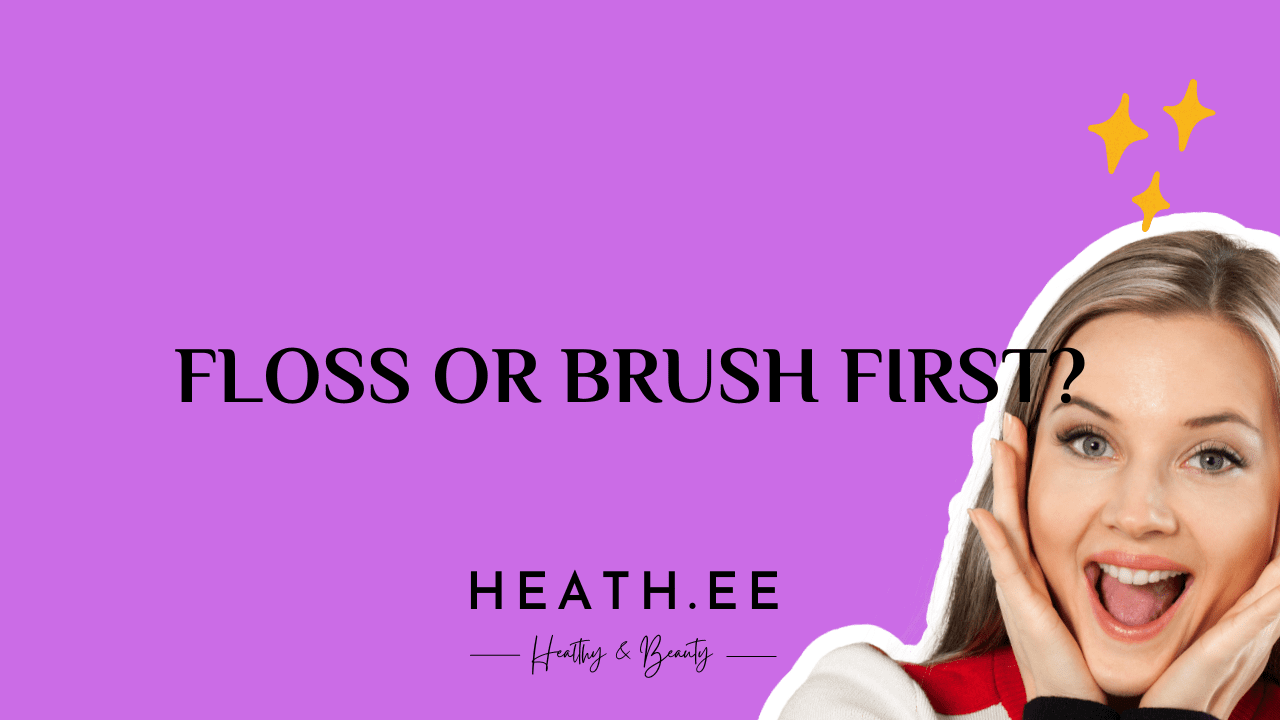Oral care is essential for maintaining healthy teeth and gums. But when it comes to brushing and flossing, many people are unsure of which one to do first. In this definitive guide, we’ll explore the pros and cons of both brushing and flossing and provide tips on the best order for your oral hygiene routine.
What are the Benefits of Brushing and Flossing?
Brushing and flossing are two of the most important components of a healthy oral hygiene routine. Brushing helps to remove plaque and bacteria from the surface of your teeth, while flossing helps to clean in between the teeth, where a toothbrush may not reach. Both brushing and flossing help to prevent tooth decay, gum disease and bad breath.

When Should You Floss and Brush?
The American Dental Association (ADA) recommends brushing your teeth twice a day for two minutes each time. Flossing should be done at least once a day, ideally before brushing. This is because flossing helps to remove plaque and bacteria from between the teeth, making it easier for your toothbrush to do its job.
What is the Best Order for Brushing and Flossing?
The best order for brushing and flossing is to floss first and then brush. This helps to remove the plaque and bacteria that can accumulate in between the teeth, which can then be brushed away. It also helps to prevent bacteria from spreading to other parts of the mouth.

What are the Benefits of Flossing First?
Flossing first has several benefits. By removing plaque and bacteria from between the teeth, it helps to reduce the risk of cavities and gum disease. It also helps to prevent bad breath by removing food particles that can get trapped in the teeth. Additionally, flossing can help to reduce inflammation of the gums and promote overall oral health.
What are the Benefits of Brushing First?
Brushing first has some benefits as well. By brushing first, you can remove plaque and bacteria from the surface of the teeth, making it easier for the floss to get in between the teeth. This can help to reduce the risk of cavities and gum disease. Additionally, brushing can help to remove food particles and debris that can cause bad breath.
What is the Best Toothbrush and Floss for Oral Care?
When it comes to choosing the best toothbrush and floss for your oral care routine, there are a few factors to consider. The toothbrush should have soft bristles and a small head to help reach all areas of the mouth. Additionally, it should be replaced every three months to ensure it is effective.
When it comes to floss, the ADA recommends using a waxed floss for best results. Waxed floss is easier to slide between the teeth and can help to remove plaque and bacteria more effectively.
What Are Some Tips for Brushing and Flossing?
When it comes to brushing and flossing, there are a few tips to keep in mind. Make sure to brush your teeth for two minutes twice a day, and floss at least once a day. Additionally, it’s important to use a soft-bristled toothbrush and waxed floss for best results.
Finally, make sure to brush and floss in the correct order. Floss first to remove plaque and bacteria from between the teeth, and then brush to remove any remaining plaque and bacteria. This will help to ensure your teeth and gums stay healthy and clean.
What Are the Benefits of Regular Oral Care?
Regular oral care is essential for maintaining healthy teeth and gums. By brushing and flossing twice a day, you can reduce your risk of cavities, gum disease and bad breath. Additionally, regular oral care can help to improve your overall health, as poor oral hygiene has been linked to a number of health conditions, including heart disease and stroke.
Conclusion
Brushing and flossing are two of the most important components of a healthy oral hygiene routine. Brushing helps to remove plaque and bacteria from the surface of your teeth, while flossing helps to clean in between the teeth. The American Dental Association (ADA) recommends brushing your teeth twice a day for two minutes each time and flossing at least once a day, ideally before brushing. The best order for brushing and flossing is to floss first and then brush, which helps to remove plaque and bacteria from between the teeth. Additionally, it’s important to use a soft-bristled toothbrush and waxed floss for best results. Regular oral care is essential for maintaining healthy teeth and gums, and can help to reduce your risk of cavities, gum disease and bad breath.



